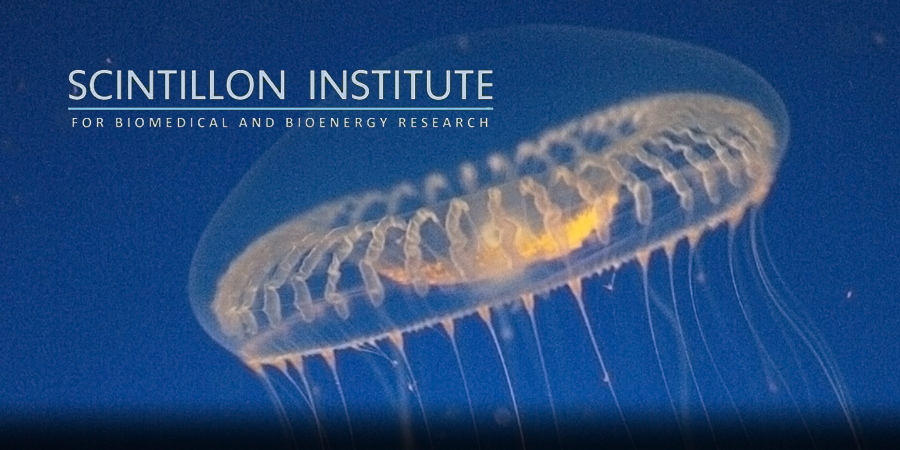Dr. Jiwu Wang - Scientific Director
My team has been studying the molecular biology of RNA-related cellular processes, such as pre-mRNA splicing, RNA interference (RNAi), microRNA (miRNA) in developmental control, and mRNA as a platform for transgene expression. Many of our most exciting research projects are derived from what we have learned about RNA. We are performing experiments to answer such questions as: can we use mRNA as the basis to identify specific antibodies by in vitro display or transcriptome sequencing? Can protein factors that are critical in vivo be delivered in the form of modified mRNAs instead of recombinant proteins? Can we use transfected mRNA/miRNA to determine in vitro cellular fate instead of using growth factors and small molecules for better specificity? Can we use only RNA molecules to edit the chromosome of mammalian cells in a footprint-free protocol, similar to what we have demonstrated for induced pluripotent stem cell (iPSC) production?
We are also curious about how gene expression cascades control cell differentiation, in conjunction with miRNA networks, particularly in adipogenesis. Our method of investigating obesity and diabetes development has been to analyze adipocytes from healthy and affected individuals through bioinformatics analysis. We plan to apply our recently developed iPSC technologies, with knocked-in biomarkers using our superior fluorescent proteins (FPs), to follow fat cell development. One of our aims is to create brown fat cells (BFCs, the "good" fat cells) from patient-specific iPSCs that can be ultimately used therapeutically in patients.
Through collaborations, we have started to grow our stem cells and their derivatives in 3D models in order to develop artificial organelles for drug testing and therapy.
The PI works with various subgroups of researchers at the Institute.
- Wang, J and Bell, L.R. (1994) "The Sex-lethal amino terminus mediates cooperative interactions in RNA binding and is essential for splicing regulation." Genes and Development, 8: 2072-2085. http://genesdev.cshlp.org/content/8/17/2072.long (Download PDF)
- Kelley, R.L., Wang, J., Bell, L.R., and Kuroda, M.I. (1997) "Sex lethal controls dosage compensation in Drosophila by a non-splicing mechanism." Nature, 387: 195-199. (Download PDF)
- Wang, J., Dong, Z., and Bell, L.R. (1997) "Sex-lethal interactions with proteins and RNA: roles of glycine-rich and RNA binding domains." J. Biol. Chem, 272: 22227-22235. http://www.jbc.org/content/272/35/22227.long (Download PDF)
- Tronchere, H., Wang, J. (co-first author), and Fu, X.-D. (1997) "A protein related to splicing factor U2AF35 that interacts with U2AF65 and SR proteins in splicing of pre-mRNA." Nature, 388: 397-400. (Download PDF)
- Chen J, Wang L, Boeg YS, Xia B, Wang J. (2002) "Differential dimerization and association among resistin family proteins with implications for functional specificity." J. Endocrinology 175(2):499-504. http://joe.endocrinology-journals.org/content/175/2/499.long (Download PDF)
- Hu J, Cui G, Li C, Liu C, Shang E, Lai L, Jin C, Wang J. (co-corresponding author), and Xia B, (2009) "Structure and novel functional mechanism of Drosophila SNF in sex-lethal splicing." PLoS One, 4(9):e6890. PMC2731243 (Download PDF)
- Hoi, H., Shaner NC, Davidson MD, Cairo CW, Wang J. and Campbell, RE. (2010) "A Monomeric photoconvertable fluorescent protein for imaging of dynamic protein localization." J. Molecular Biology 401(5):776-791. http://www.sciencedirect.com/science/article/pii/S0022283610006996 (Download PDF)
- Cheng R, Qiu J, Zhou XY, Chen XH, Zhu C, Qin DN, Wang JW, Ni YH, Ji CB, Guo XR. (2011) "Knockdown of STEAP4 inhibits insulin-stimulated glucose transport and GLUT4 translocation via attenuated phosphorylation of Akt, independent of the effects of EEA1." Mol Med Report 4(3):519-23. (Download PDF)
- Warren L., Ni Y., Wang J. (corresponding author) and Guo X. (2012) "Feeder-Free Derivation of Human Induced Pluripotent Stem Cells with Messenger RNA." Scientific Reports, doi:10.1038/srep00657. (Download PDF)
- Ni Y.,Ji C., Wang B.,Qiu J., Wang J. (corresponding author),and Guo X. (2012) "A Novel Pro-Adipogenesis Factor Abundant in Adipose Tissues and Over-Expressed in Obese Patients Acts Upstream of PPARγ and C/EBPα." J Bioenerg Biomembr., DOI 10.1007/s10863-012-9492-6. (Download PDF)
- Shaner, N.C., Lambert, G.G., Chammas, A., Ni, Y., Cranfill, P.J., Baird, M.A., Sell, B.R., Allen, J.R., Day, R.N., Israelsson, M., Davidson, M.W., & Wang, J. (2013) "A bright monomeric green fluorescent protein derived from Branchiostoma lanceolatum." Nature Methods (Epub March 24). (Download PDF)
- Warren, L. & Wang, J. (2013)."Feeder-free reprogramming of human fibroblasts with messenger RNA." Current Protocols in Stem Cell Biology, Nov 13;27:Unit 4A.6.. doi: 10.1002/9780470151808.sc04a06s27.
- Wang, G., McCain, M.L., Yang, L., He, A., Pasqualini, F.S., Agarwal, A., Yuan, H., Jiang, D., Zhang, D., Zangi, L., Geva, J., Roberts, A.E., Ma, Q., Ding, J., Chen, J., Wang, D.Z., Li, K., Wang, J., Wanders, R.J., Kulik, W., Vaz, F.M., Laflamme, M.A., Murry, C.E., Chien, K.R., Kelley, R.I., Church, G.M., Parker, K.K., Pu, W.T. (2014) "Modeling the mitochondrial cardiomyopathy of Barth syndrome with induced pluripotent stem cell and heart-on-chip technologies." Nature Medicine, Jun;20(6):616-23. doi: 10.1038/nm.3545. Epub 2014 May 11.
- Feng, Q., Shabrani, N., Thon, J.N., Huo, H., Thiel, A., Machlus, K.A., Kim, K., Brooks, J., Li, F., Luo, C., Kimbrel, E.A., Wang, J., Kim, K.-S., Italiano, J., Cho, J., Lu, S.-J., and Lanza, R. (2014) "Scalable Generation of Universal Platelets from Human Induced Pluripotent Stem Cells." Stem Cell Reports doi:10.1016/j.stemcr.2014.09.010. Epub 2014 Oct 16.

